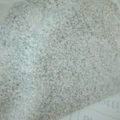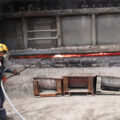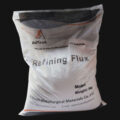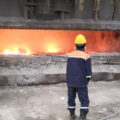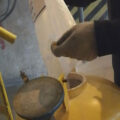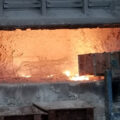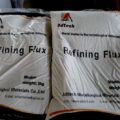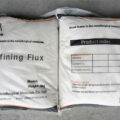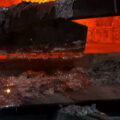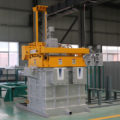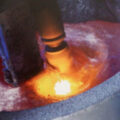Refining flux for molten aluminum is used in furnace by most foundries. The refining of molten aluminum refers to the removal of gas and inclusions in aluminum alloy. As the two processes of aluminum alloy smelting and refining are mostly combined together, they are called refining in production practice. Because the gas in aluminum alloy is mainly hydrogen, so degassing is mainly to remove hydrogen.

At present, the main method of refining molten aluminum is to produce a large amount of gas through refining flux for molten aluminum. The bubble body can be the internal chemical reaction of liquid aluminum, or a part of refined degassing agent can be directly added into hydrogen aluminum by partial pressure principle.
The particles diffuse into the bubble. At this time, the partial pressure of the bubble is zero, and the specific gravity of the bubble is lighter. When the bubble rises to the surface of molten aluminum, the bubble breaks and hydrogen escapes into the atmosphere, and the hydrogen is finally removed. The principle of slag removal is the same as that of degassing.
Although the density of solid alumina is similar to that of molten aluminum, it takes a long time to reach the bottom of the crucible after entering the molten aluminum. However, the oxide film formed after the oxidation of aluminum water only has a large number of large-diameter pores, which are in close contact with aluminum water.
The adsorption tends to float upward due to its large surface area. Therefore, the specific gravity difference between the oxide film and aluminum water is small. When it is mixed into the melt, the speed of floating and sinking is very slow, and it is difficult to remove from the aluminum water, thus forming holes and inclusions in the casting. Therefore, the key to transfer aluminum water is to minimize mixing and minimize the contact between aluminum water and air.
Flux refining of molten aluminum is the most common method to eliminate pinholes in aluminum alloy castings. The most commonly used flux is degassing with chloride salts and chlorides during melting. When degassing with chloride salts and chloride degassing agents, press the degassing agent into the bottom 100 m of the crucible with a bell shaped cover and move at a constant speed.
In order to prevent a large amount of splashing of molten aluminum, degassing agent can be added in batches to complete degassing and slag discharge, and then stand for a specified time. For other metal fluxes, the refining operation is the same.

